One of the most common questions I encounter as a public speaking coach is: “What’s the best way to present in order to appear professional?” It’s a question that reveals an underlying assumption many professionals carry: that there must be a single, perfect formula for delivering an impactful presentation.
The truth? The most professional way to present is to be authentically yourself.
The Myth of the “Perfect” Presentation Style
Let’s consider two of the most successful speakers of our time: Tony Robbins and Brené Brown. Robbins commands the stage with explosive energy, moving constantly and speaking with passionate intensity. Brown, on the other hand, delivers her messages with a measured, conversational tone, often standing in one spot while sharing vulnerable personal stories.
These speakers couldn’t be more different in their presentation styles. Yet both have achieved remarkable success and influence because they’ve embraced their authentic voices rather than trying to fit into a predetermined mold of what a “professional speaker” should be.
Why Authenticity Matters More Than Convention
When we try to adopt someone else’s speaking style or conform to what we think is “professional,” several things happen:
- We expend mental energy trying to maintain an artificial persona instead of focusing on our message
- Our audience senses the disconnect between our words and our natural way of being
- We lose the unique qualities that make our communication memorable and impactful
Think about the most engaging presentations you’ve attended. Chances are, they stood out not because the speaker followed a strict formula, but because they connected with their audience in a genuine way.
Finding Your Professional Authentic Voice
Despite the importance of authenticity, this doesn’t mean we should ignore professional standards or preparation. Instead, we should focus on elevating our natural communication style. Here’s how:
1. Identify Your Natural Strengths
- Are you naturally analytical? Use that to break down complex topics clearly
- Do you tell great stories? Incorporate relevant narratives into your presentations
- Are you quietly thoughtful? Use that to deliver powerful, measured insights
2. Align With Your Purpose
Your presentation style should serve your message and audience while feeling natural to you. Consider:
- What does your audience need to hear?
- How can you deliver that message in a way that feels genuine to you?
- What aspects of your personality can enhance rather than detract from your message?
3. Develop Professional Presence
Professional presence isn’t about conforming to a single standard. It’s about:
- Being well-prepared and organized in your content
- Showing respect for your audience’s time and attention
- Maintaining appropriate energy levels for your context
- Demonstrating confidence in your unique approach
The Professional Impact of Authenticity
When you present authentically:
- Your audience trusts you more because they sense your genuineness
- You appear more confident because you’re not trying to be someone else
- Your message becomes more memorable because it’s delivered distinctively
- Your professional presence becomes sustainable because it’s natural to you
Moving Forward
Instead of asking “What’s the best way to present professionally?” try asking:
- “How can I communicate my message most effectively while being true to myself?”
- “What aspects of my natural style can I refine to better serve my audience?”
- “How can I prepare thoroughly while maintaining my authentic voice?”
Remember: Professionalism isn’t about fitting into a predetermined mold—it’s about bringing your best self to each speaking opportunity. Your unique perspective, experiences, and way of communicating are assets, not limitations.
When you embrace your authentic voice while maintaining high standards of preparation and audience awareness, you don’t just appear professional—you become a memorable and effective communicator who inspires trust and engagement.
Your journey to becoming a more effective presenter isn’t about transformation into someone else—it’s about becoming more confidently yourself.

